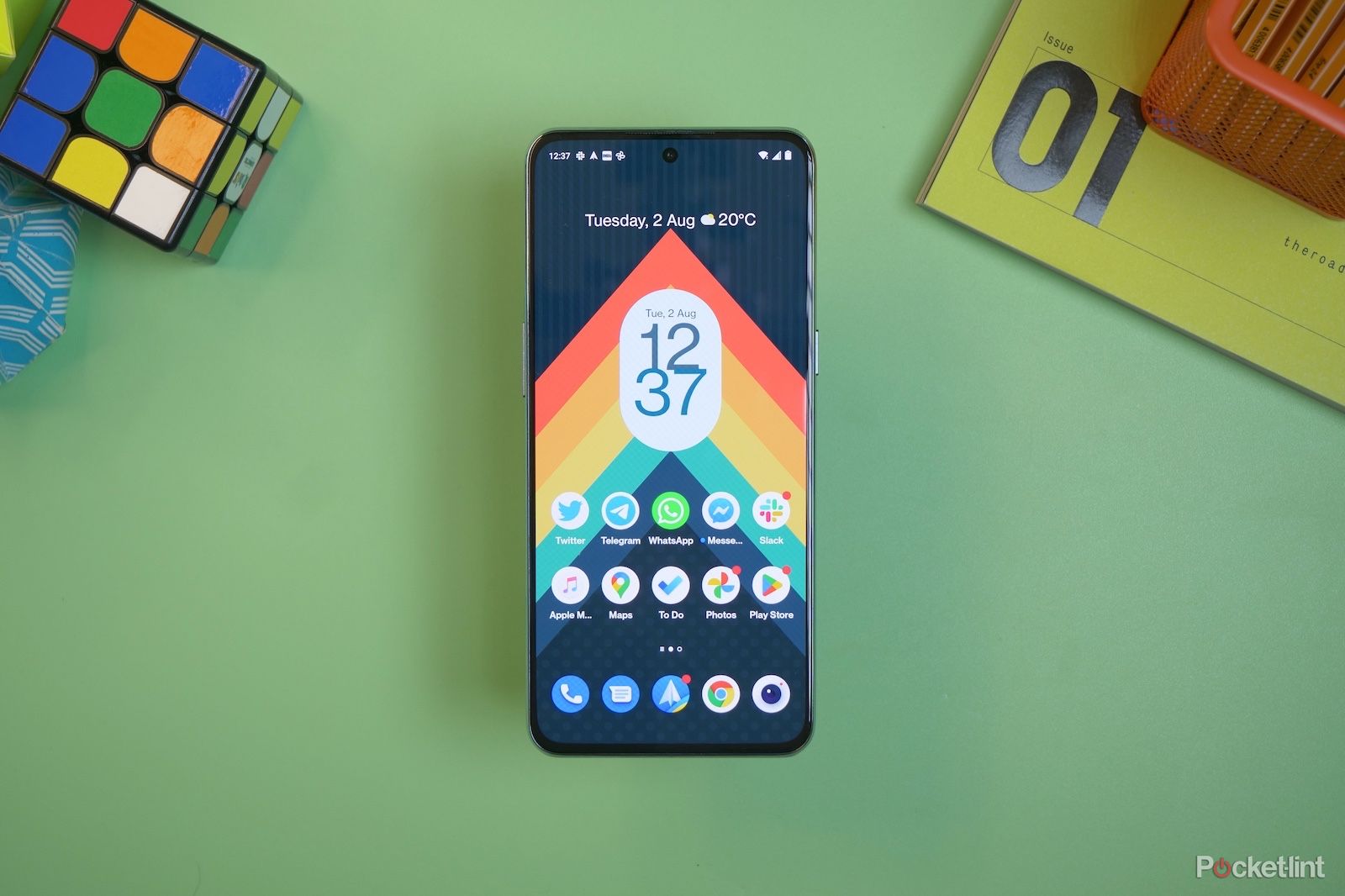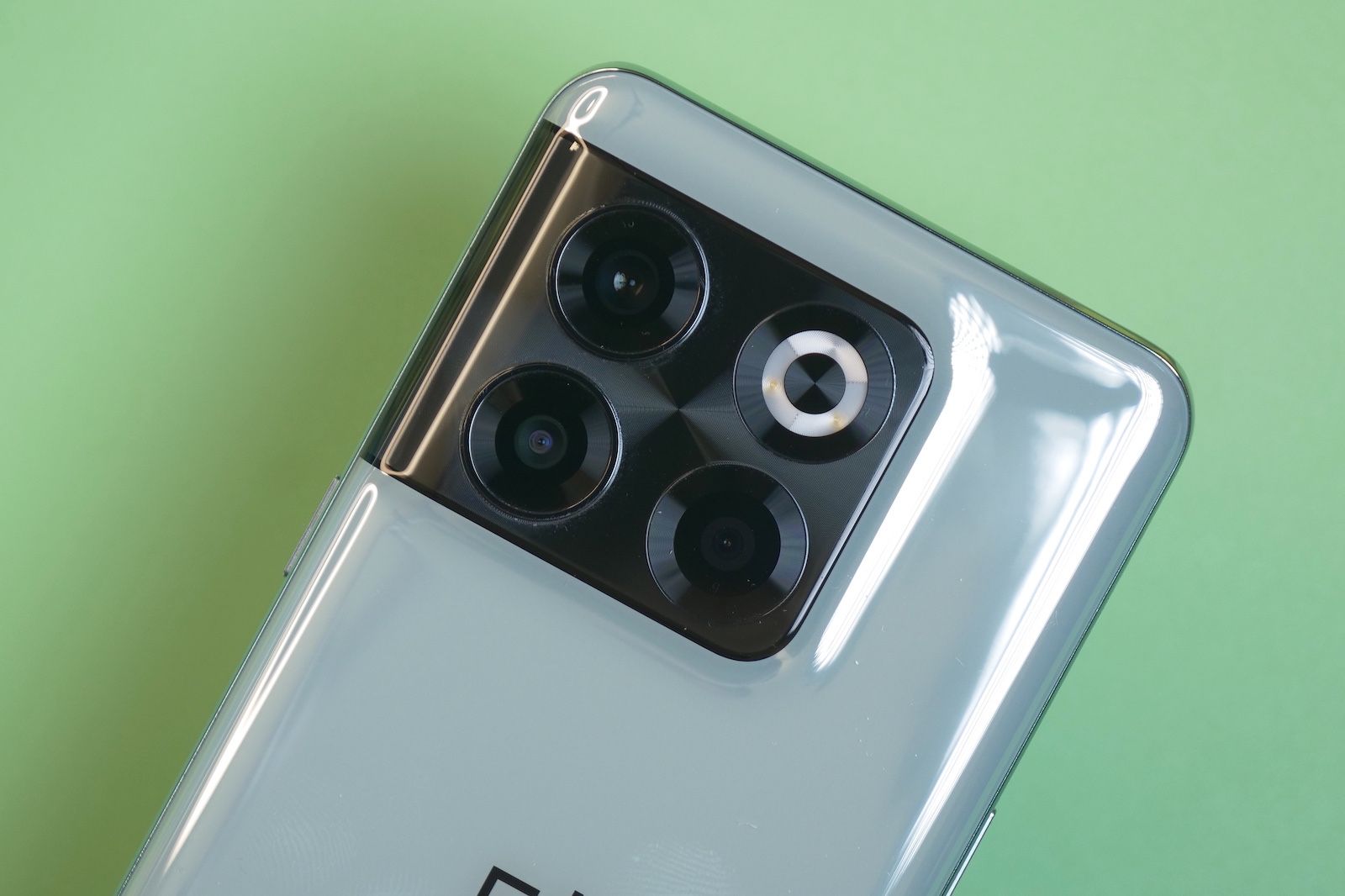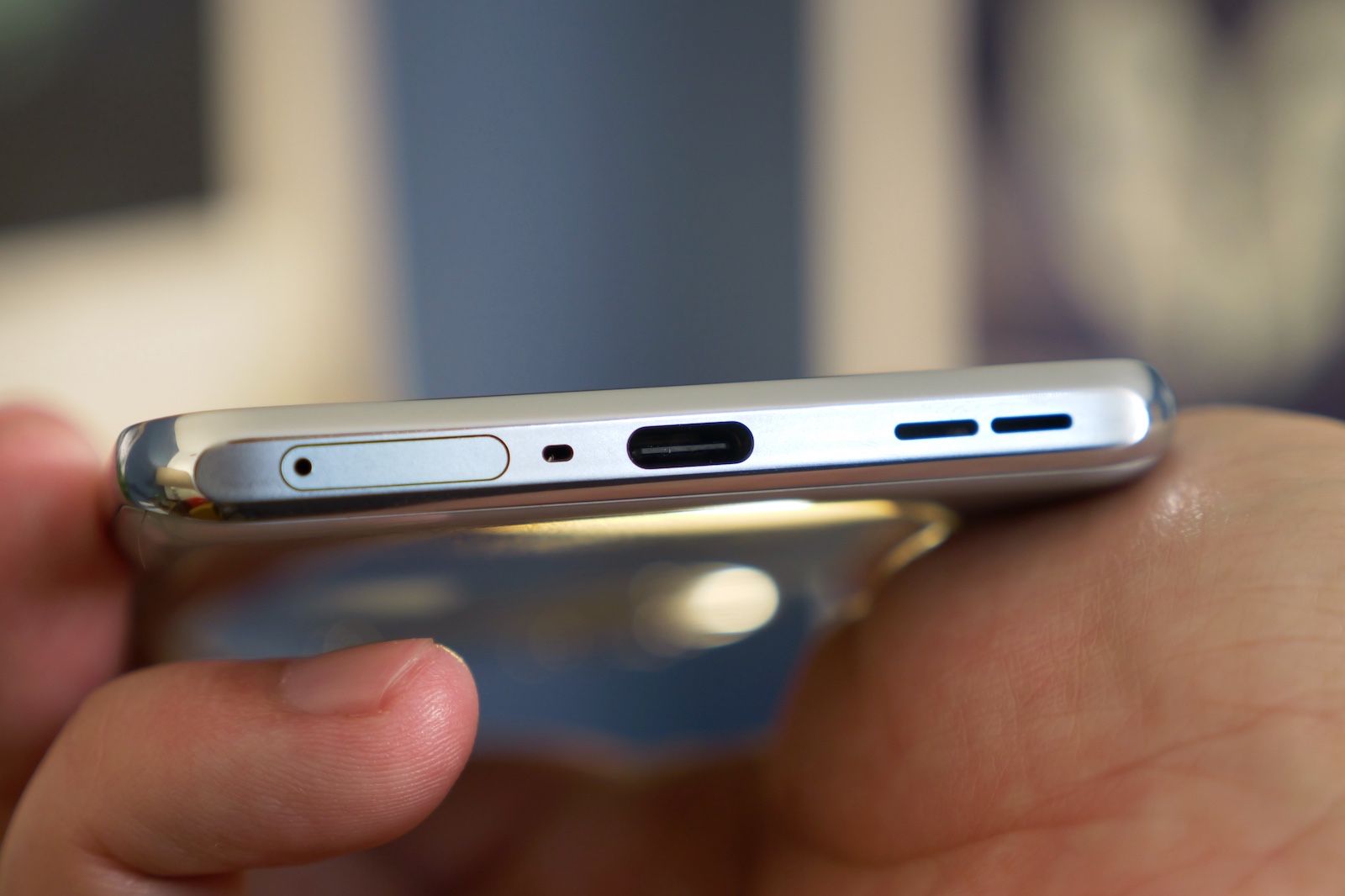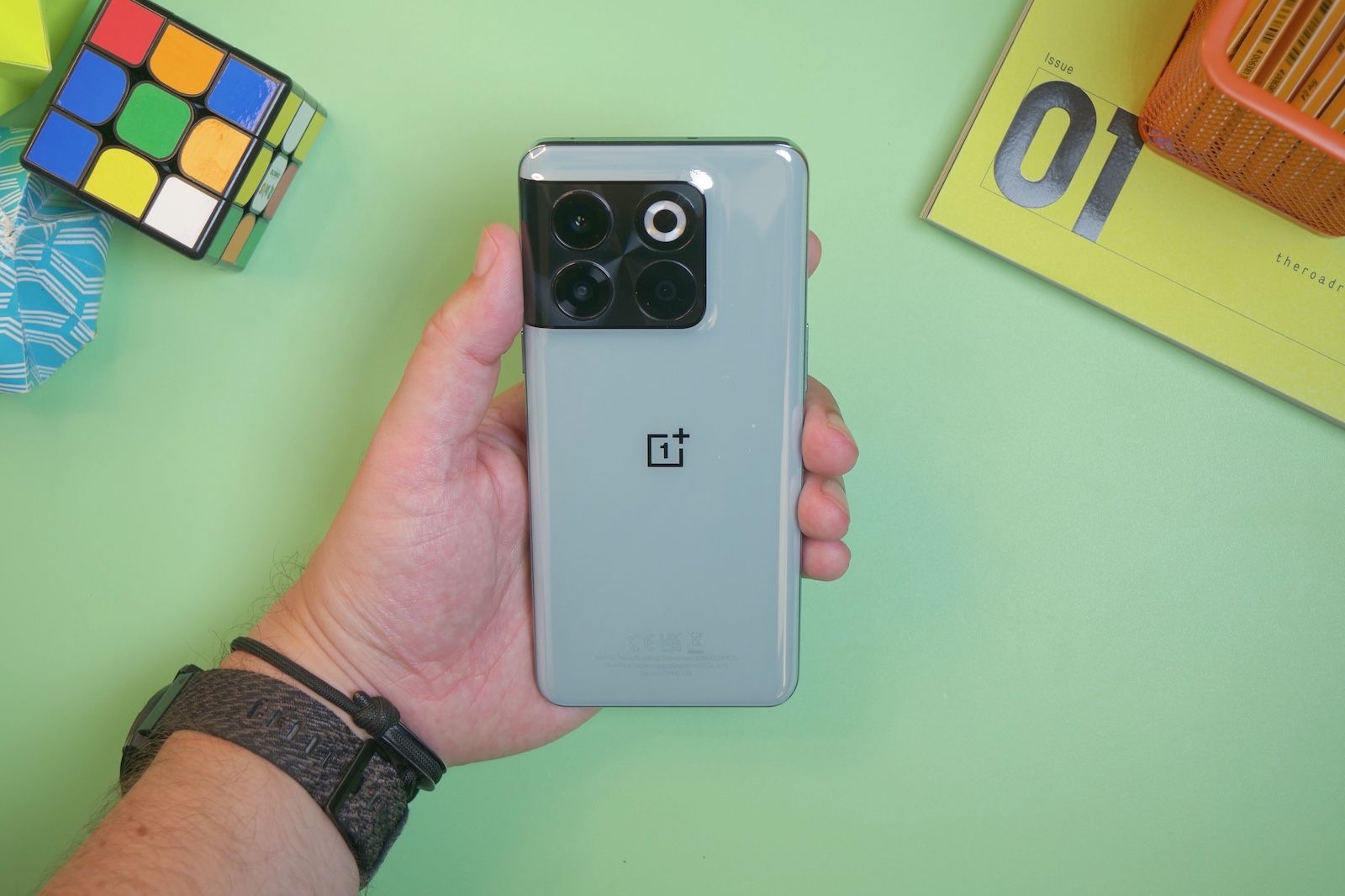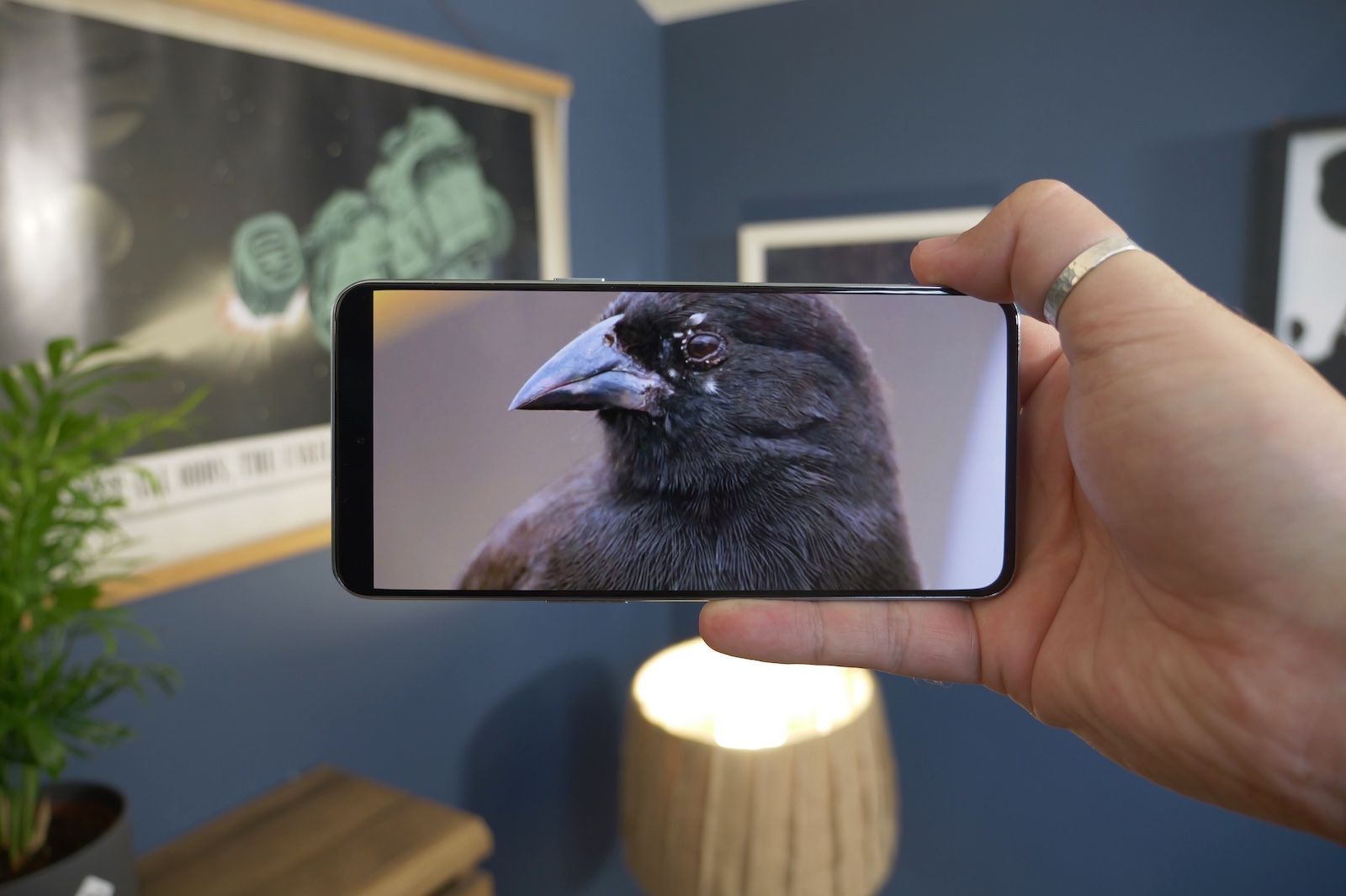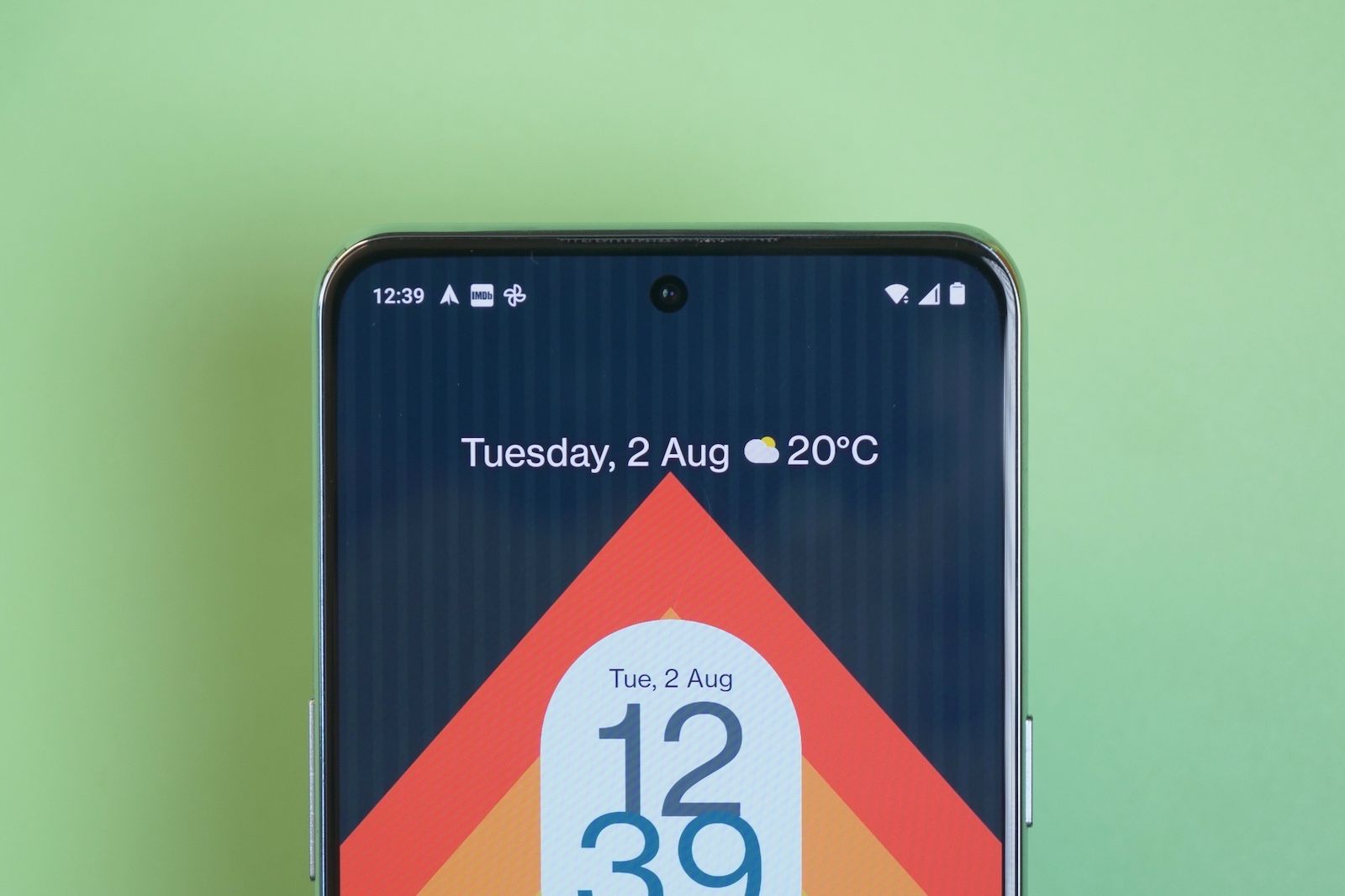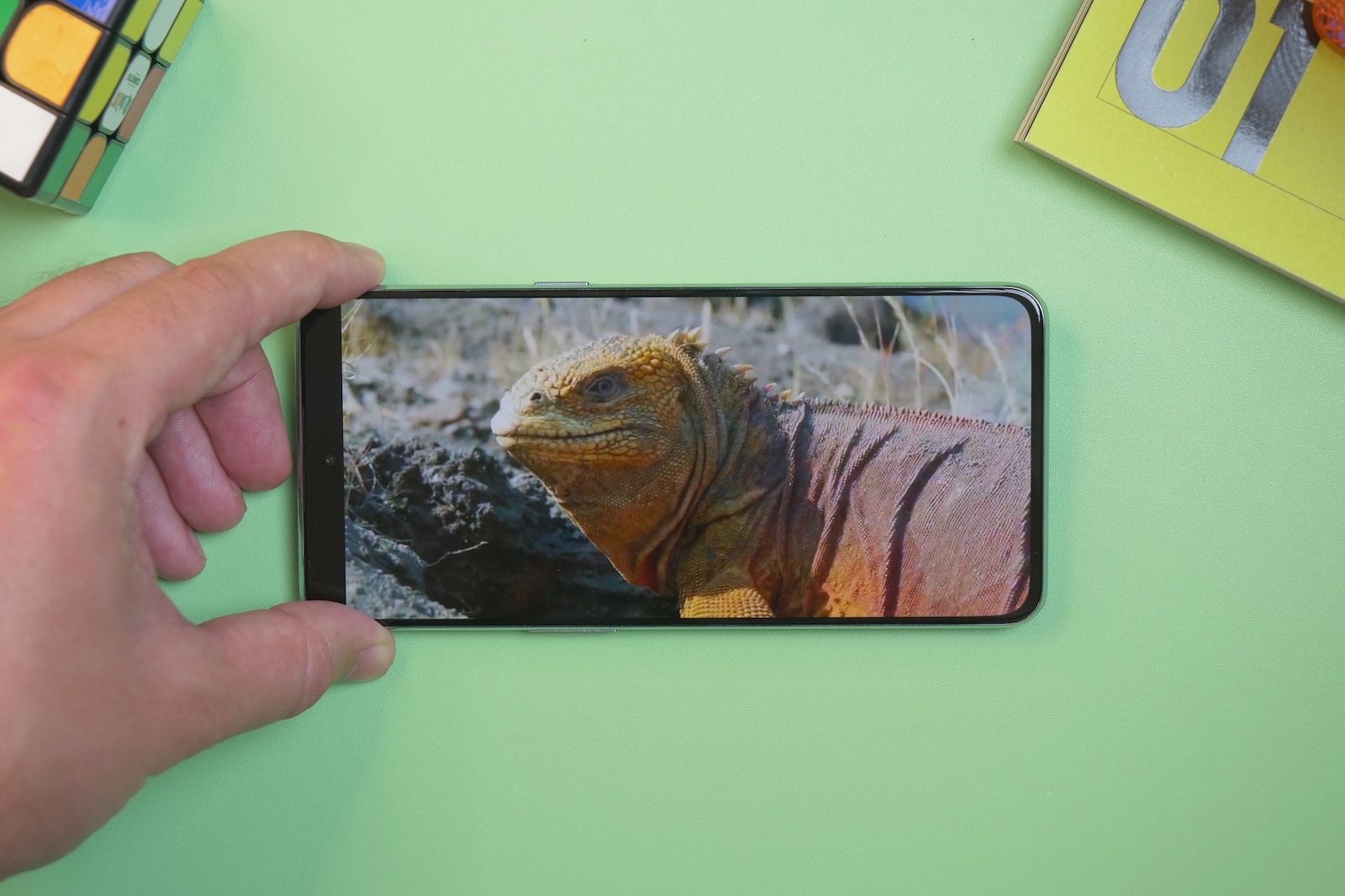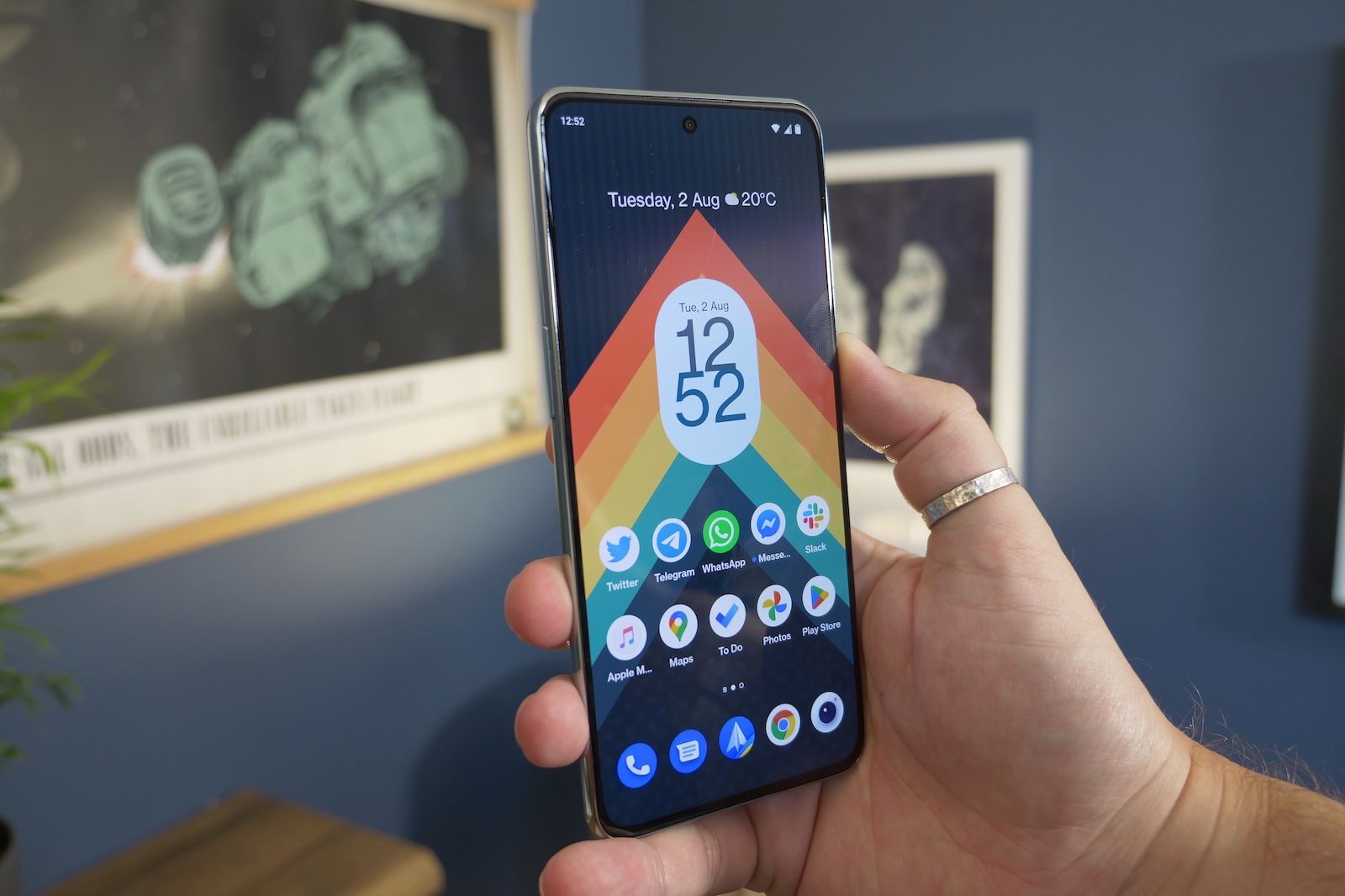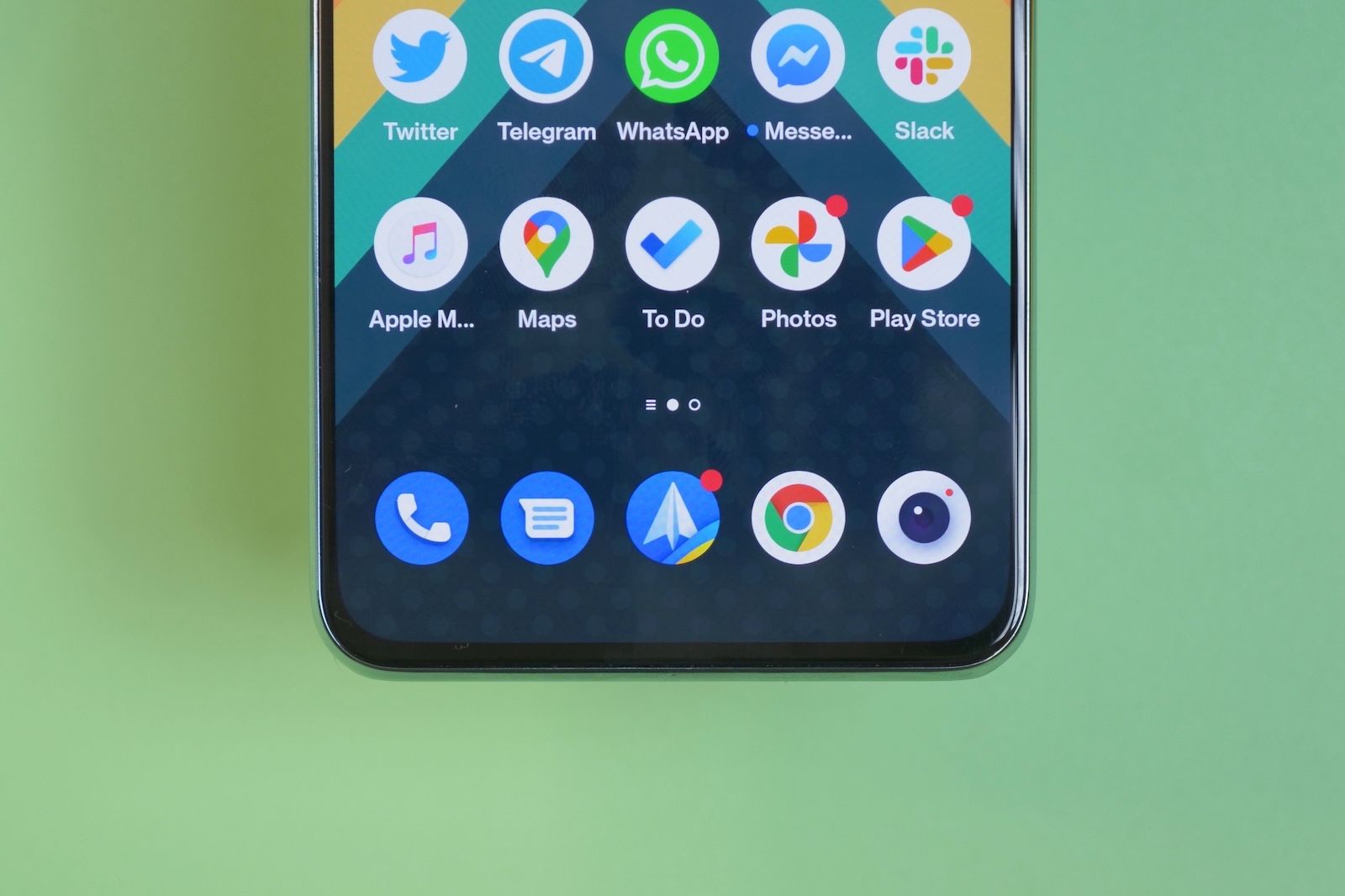With the 8T a couple of years ago, OnePlus released a phone that was halfway between a flagship and a mid-ranger. For 2022, it's doing the same again with the 10T.
It sits between the Nord 2T and the OnePlus 10 Pro, offering a poorer display than the flagship and adopting the build quality and camera system from the cheaper Nord 2T.
With 150W charging and a Snapdragon 8+ Gen 1 processor on board here, though, the 10T does contain the power of a true flagship.
Could it be the perfect model for those who want speed without having to meet the asking price of the 10 Pro and other top-end phones? Let's find out.
Our quick take
The 10T is a complicated phone, as it's clear that OnePlus has had to cut back in some areas in order to fit top-tier speed into a phone that costs considerably less than the flagship 10 Pro.
Speaking purely in terms of performance, the OnePlus 10T is a winner, providing a better experience than virtually any other phone in this price range - and even some more expensive ones.
It's really fast and responsive, and the 150W charging is an incredible feature to have at your disposal.
Elsewhere, it can feel a little bit of a compromise. The display, while good, isn't the absolute best, and the camera, build quality and materials feel like they belong in the mid-range market.
However, value is the other big factor here. The asking price is a good chunk cheaper than the 10 Pro, so, all told, it's an excellent option to have on your list - and a perfect fit for those who just want pacy performance across the board.

OnePlus 10T - 4.5 / 5
| FOR | AGAINST |
|---|---|
|
|
OnePlus 10T 5G Dual-Sim 128GB ROM + 8GB RAM (GSM only | No CDMA) Factory Unlocked 5G Smartphone (Moonstone Black) - International Version
Design
- Dimensions: 163 x 75.37 x 8.75mm
- Weight: 203.5g
- Plastic frame; Gorilla Glass 5 front and back
- Moonstone Black and Jade Green colours
It's clear that the 10T comes from the same family as the 10 Pro, with it featuring the same large square camera unit on the rear. The difference, though, is that it ramps up seamlessly from the glass on the back of the phone, rather than being stuck on top.
Of course, this is a similar technique we've seen from Oppo - OnePlus' parent company - who used this same approach with the last two series of Find X Pro phone models. There is no Hasselblad branding, though, and, if that tells us anything, it's that cameras aren't as much of a priority in the 10T as they are in the 10 Pro. More on that later.
That logo isn't the only thing missing from the 10T, either. OnePlus has ditched the alert slider switch that usually sits above the power/wake button on the right side. The reason OnePlus gave when we asked the reason for the change was that it takes up too much space internally, and it was needed for additional power and capabilities of the phone.
It's a shame, because it's one of the features we've loved about the OnePlus flagship phones for years. Like Apple's mute switch, it gives you a convenient, tactile way to switch between ring, silent and vibrate modes without having to wake up the phone and use the touchscreen.
Another key difference between the 10 Pro and 10T is materials. Like the OnePlus Nord 2T, the 10T has a plastic frame sandwiched between the glass on the front and back. It's a little bit of a downgrade from the 10 Pro's aluminium frame, as is the Gorilla Glass 5 - dropping from Gorilla Glass Victus on the 10 Pro. We saw a similar approach with the OnePlus 8T when that launched.
With just over a week of use, we already saw a couple of minor scratches on the display, suggesting you might want to keep on the pre-applied screen protector.
Despite the downgrade in materials, it still feels solid enough. However, with no official IP rating for water and dust resistance, it won't be as impervious to those threats as the 10 Pro, with its IP68 rating.
Still, it's a nice enough phone to use. The curves on the glass at the back help what is quite a large phone fit a bit more comfortably in the hand than it would if OnePlus opted for flat edges and right angles.
Our only minor annoyance was that the Jade Green version is quite slippery, and we'd often find it slipping off soft furnishings. In the week or two that we've been testing it, we've had to fish it out of the gaps in the sofa three or four times. We'd say it's probably wise to get a case for it.
At the risk of making it seem a little bit doom and gloom, we do really like the flat display on the front. Having this, instead of the curved 10 Pro display, means it's a bit easier to type on, and you're less likely to experience any accidental touches or distorted colours of video at the edges. It also gives it a sense that the screen is more expansive, which is great for content viewing.
Display
- 6.7-inch fullHD+ (2412 x 2080) AMOLED display
- 120Hz adaptive refresh (120/90/60 Hz)
- Up to 1000Hz touch response rate
- HDR10+; 10-bit colour; 950 nits peak brightness
As mentioned, there is a benefit to OnePlus' choice of the screen on the front of the 10T: it's completely flat. On the whole, it's a great display that offers very vibrant colours, wide gamut support (up to 10-bit depth) and HDR10+.
Even though it's only fullHD+ resolution - and not Quad HD - it still displays good sharpness. Even text and fine lines seem well detailed and smooth on this screen.
It isn't the perfect display, though. It does lack a little brightness when compared to the 10 Pro and seems to have an overall red-ish/pink-ish tint, which means the whites don't seem clean. Similarly, with an already quite saturated approach to colour, it means pinks and reds are even more boosted than they already would be without the pink-ish tint.
This tendency shows up in every colour calibration mode, too. So, when you compare it side-by-side with the 10 Pro, the older model just looks much better balanced in terms of colour and brightness. Similarly, the contrast seems to be cranked up a bit high, giving an unnatural, crushed look to some darker areas. These however are compromises you often see when looking at the more affordable flagship-powered devices. So it's not exactly surprising to see it in the 10T.
Then there's the fact that it doesn't have the same kind of panel as its predecessor, despite still being able to reach the heights of 120Hz refresh rates for smooth and sharp animation. It's adaptive, but it can only switch between 60Hz, 90Hz and 120Hz, and that means it won't drop as low as 1Hz for static pages and - as a result - will consume more battery than it needs to.
It's worth noting, of course, that most video content is between 24-60fps, and so having a screen that can go above that to the heights of 120Hz is something you generally only see when flicking and scrolling through elements of the interface. It just helps it feel smooth and fast, and, in that regard, it performs just as well as the more expensive 10 Pro.
Performance and battery
- Snapdragon 8+ Gen 1 processor
- 8GB/128GB or 16GB/256GB variants (12GB/256GB in India)
- 4800mAh battery - 150W fast charging (125W in the US)
Speed and fluidity is OnePlus' raison d'être. It's one thing that the company has always done well. Partly down to using powerful and fast internal components, and partly down to making its software seem zippy and responsive. And we're glad to say, this is one area the OnePlus 10T absolutely nails.
With the Snapdragon 8+ Gen 1 inside, it doesn't just make the phone a little more powerful than the 10 Pro, it's also much more power efficient. Coupled with the impressively large cooling system inside, you get a phone that performs at a top level and doesn't get overly hot or drain too much battery while doing it.
We've put the phone through its paces, going through long sessions on our favourite games (mostly Mario Kart Tour), and never felt it getting much warmer in our hand. The only time it did get warm was when charging, but, given the speed at which it charges, that's to be expected.
While benchmarks might show some differences between the 10T and 10 Pro in terms of speed and frame rates, it is difficult to see much difference between them here. The one area we did feel the difference was in the temperature. Where the OnePlus 10 Pro gets warm during games, the 10T never seemed to.
For gamers who spend time with more demanding titles, there are a few other enhancements that should ensure you keep a competitive edge. None less so that 1000Hz touch sampling rate on the display, which means any touch or swipe gestures are picked up virtually instantly.
With fast-charging technology developing to unthinkable speeds over the past couple of years, we're almost at the point where battery life almost doesn't matter. Of course, you still need a phone that will get you through your work day, but the 4800mAh battery in the OnePlus 10T can do so without trouble.
In our testing, we'd finish a day with something around 40 per cent left over after taking it off charge in the morning. That's with 3-4 hours of screen usage split between games, Twitter and the web browser. Not quite a two-day battery, then, but more than good enough for most people.
Similar to what we've found with other fast-charging phones, there's never any battery anxiety with the 10T - purely because of the speed at which it refills.
Upping the ante from the 10 Pro, the charging has jumped from 80W to 150W. That means a full 1-100 per cent charge in 19 minutes. And when you remember the last 10 per cent is slower than the first 90 per cent, the vast majority of that refill happens in the first 10-15 minutes. It's fantastic.
It means that you can just leave your battery until it's practically empty before plugging it in. In the time it takes you to get dressed, brush your teeth and make/drink a coffee, the phone is ready to go for another full day.
As an aside to that, the charger that ships with the 10T features a USB-C connector (not USB-A) and can also charge Power Delivery-compatible devices like laptops and tablets up to 65W, making it the only charger you ever really need to carry around with you.
Cameras
- 50MP primary camera (IMX766 sensor) - OIS and EIS
- 8MP ultrawide and 2MP macro
- 16MP front camera
- 4K up to 60fps
It's safe to say the 10 Pro offered the strongest camera performance we'd seen from a OnePlus phone when it launched, but, with the company looking to slot this phone in between that and the Nord 2T, some compromises were obviously necessary. The 10T, then, rolls back to what is essentially the same camera loadout as on the mid-range Nord 2T.
That means you get a trio of lenses on the back, but only one of those is one we'd class as a strong performer. That's the primary 50-megapixel camera that uses Sony's IMX766 sensor. It's the same sensor OnePlus has in the ultrawide camera of the 10 Pro and Oppo uses in both primary and ultrawide cameras on the Find X5 Pro.
As sensors go, it's very good. Along with the ISP built into the Snapdragon 8+ Gen 1 platform, it delivers vibrant and sharp images in good daylight with a good balance in the shadows and highlights. It doesn't seem to struggle with harsh lighting or bright highlights.
The purists may find it's a little too oversaturated, but there's no denying the attractiveness of the images. It even produces a strong background blur naturally when you focus on close-up objects, adding a real sense of depth to images.
It's a decent lens in lower light conditions, as well. Although, when shooting indoors away from bright light, you might notice a little noise creeping into the shadows.
It's a strong night mode performer, though, thanks to OnePlus' updated Nightscape algorithms. It can draw in a lot of light and stabilise the shot, combining its AI processing with the OIS and EIS that keeps the lens steady. Again, contrast is a bit heavy, as is saturation, but the stabilisation offered means it delivers sharp, bright results pretty much every time.
The ultrawide, sadly, isn't quite as strong - not in any condition. We would almost advise not using it, as the difference in quality between the ultrawide and primary is so stark. It has a harder time balancing out the highlights and shadows, delivering images that generally look flatter, a bit rough and lacking in detail.
The end result is washed-out images, and it struggles to draw in as much light as the primary lens, making it unusable in some low-light conditions. The fact it's not well stabilised also means you'll see blur from hand-shake/motion in lower light situations, too.
The 2-megapixel macro sensor also isn't really worth speaking much about. It does mean you can get really close to small objects, but the lower resolution also means it's not very sharp. Results are noisy and lacking in sharpness, colour and vibrancy. In fact, when you might want a close-up of something smaller, you'll get much better results by moving a little further away and hitting the 2x zoom on the primary camera.
Using this method, you get sharpness, depth, colour and detail in good measure. It seems yet another instance of a company sticking a useless lens on the back of a phone to say it has a triple camera system. It's almost forgivable on cheaper mid-range devices, and can almost be expected on a phone in this price range too, but we'd have loved to see two strong cameras here, instead of this middling offering with two sub-par lenses and only one good one.
Software
- OxygenOS 12.1 based on Android 12
- Three major updates
- Four years of security patches
As for software, OnePlus is continuing with the same approach here. It runs OxygenOS 12.1, based on Android 12. It's not at all like the modern Pixel software, offering an experience more like older versions of Android.
This has its benefits, like the fact that the Quick Settings shade has more toggles in it. Plus, OnePlus makes it really easy to customise every aspect of its appearance through the 'Personalisations' screen.
The company also promises to deliver three major software updates, which include the Android 13-based OxygenOS 13 coming later this year.
You'll also get four years of security patches. It's not the longest promise we've heard, though, and one that may make it a less attractive option than Google's Pixel range.
OnePlus 10T 5G Dual-Sim 128GB ROM + 8GB RAM (GSM only | No CDMA) Factory Unlocked 5G Smartphone (Moonstone Black) - International Version
To recap
The OnePlus 10T is a great value phone for the money, offering high performance specifications, a great display and at least one good camera for a very reasonable price. You do have to compromise a little on some areas, but it's still represents a very competitive phone for the cost.

